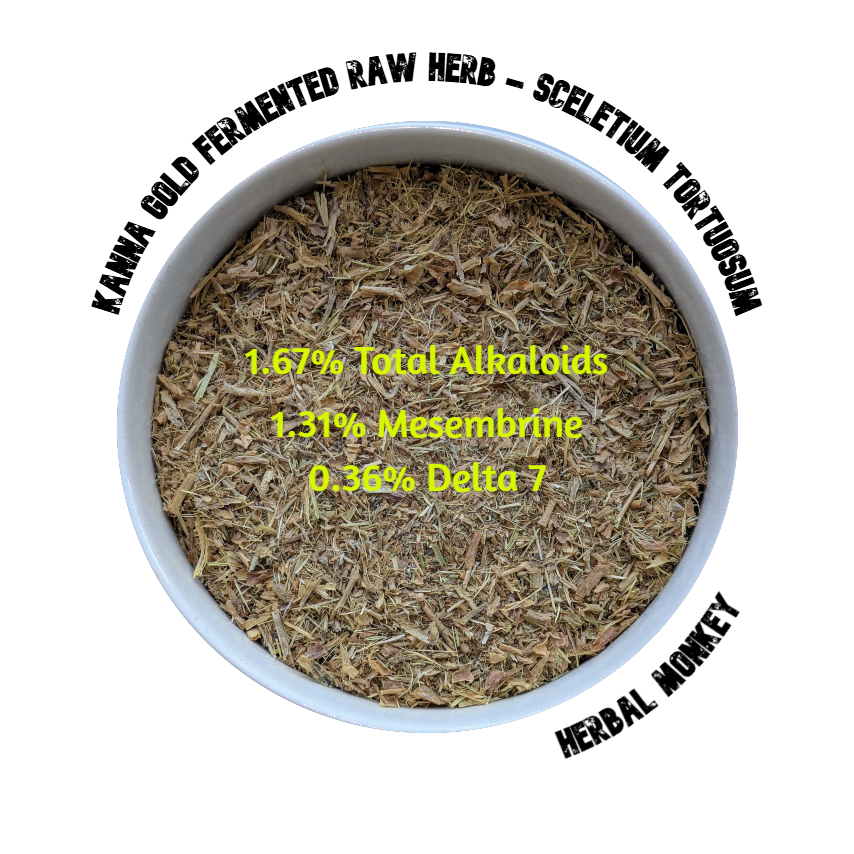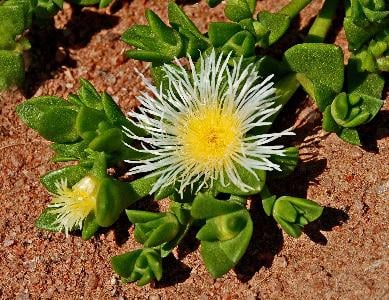Kanna Leaf - The History of this Fascinating Sacred Plant

The Fascinating Heritage of Sceletium tortuosum (Kanna Leaves)


1. Origins & Traditional Use
Kanna—also known by names such as “kougoed” (Afrikaans for “something to chew”)—is the common name given to the succulent plant Sceletium tortuosum native to the Cape Provinces of South Africa.
-
Indigenous groups, especially the Khoisan (including the San and Khoi peoples), have used this plant for centuries.
-
The practice of chewing the dried plant (sometimes fermented) was used to relieve thirst, hunger, fatigue, and to uplift mood during long hunting or pastoral missions.
-
The first written European record dates back to 1662 when the Dutch colonial administrator Jan van Riebeeck traded with native tribes for kanna.
-
The Latin name “Sceletium” comes from the skeleton-like veins that appear in the dried leaves (“skeleton-fig”), while “tortuosum” refers to the twisted nature of its stems.
2. Preparation & Traditional Rituals
Traditional preparation of kanna leaves often involved the following steps:
-
Harvesting the above-ground plant material, then fermenting it (sometimes in a bag) and drying it in the sun. This process was believed to transform the alkaloid profile and reduce certain unwanted compounds.
-
The dried material was then chewed (the saliva swallowed), or sometimes made into teas, tinctures, snuffs or smoked, depending on the cultural context.
-
In social or ritual settings, the mood-elevating properties were valued: one account from the 18th century describes how users would “commence to dance” after chewing kanna.
3. Modern Interest & Scientific Insights
-
Modern phytochemical studies have identified a suite of alkaloids in Sceletium tortuosum—such as mesembrine, mesembrenone, tortuosamine—some of which act on serotonin transporters and other neurological pathways.
-
Research suggests the plant may support mood, stress relief, and mild anxiety reduction—but clinical data remain limited, and efficacy for any medical condition is not yet established.
-
Contemporary sources caution that while kanna is often marketed for well-being, there are possible side-effects, especially if used with other psychoactive substances or medications (e.g., SSRIs, MAO-inhibitors).
4. How Kanna Leaves Are Used Today
-
In its most basic form, the dried leaves (sometimes shredded) can be chewed.
-
Capsules, tinctures, teas and extracts of kanna are more commonly available in wellness markets.
-
It is still regarded as a natural botanical that may support emotional balance and cognitive calm, though not a substitute for professional medical treatment.
-
As with all botanical products, it’s wise to check legal status in your country and proceed with awareness of possible interactions.
5. Why We Offer Kanna Worldwide
At herbalmonkey.co.uk, we proudly supply high-quality kanna leaves sourced with care and offered for shipping worldwide. Our commitment:
-
Ensure product integrity and authenticity.
-
Provide supporting information about origins and safe usage.
-
Maintain transparent shipping so that customers around the globe can access this unique botanical offering.






